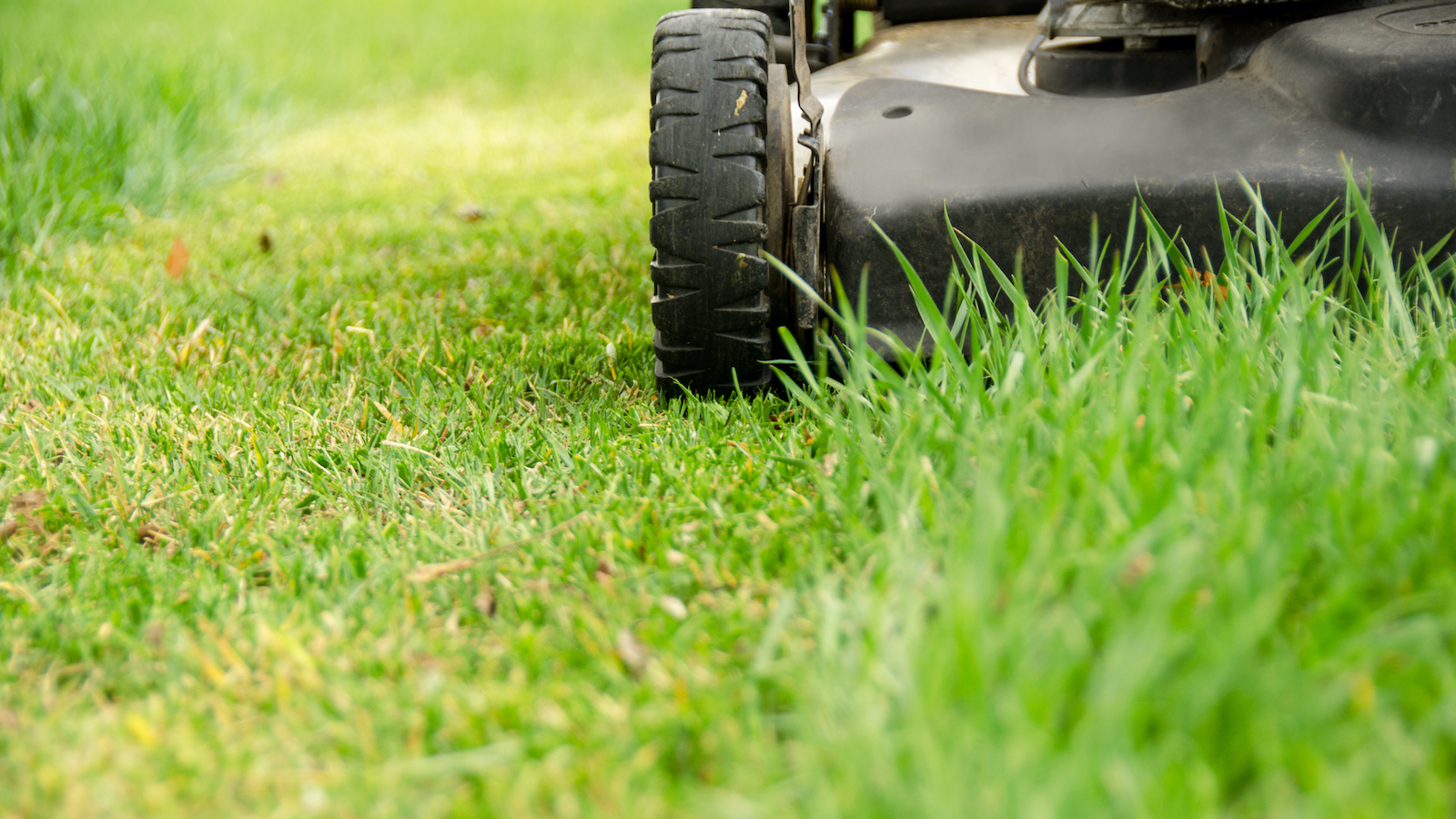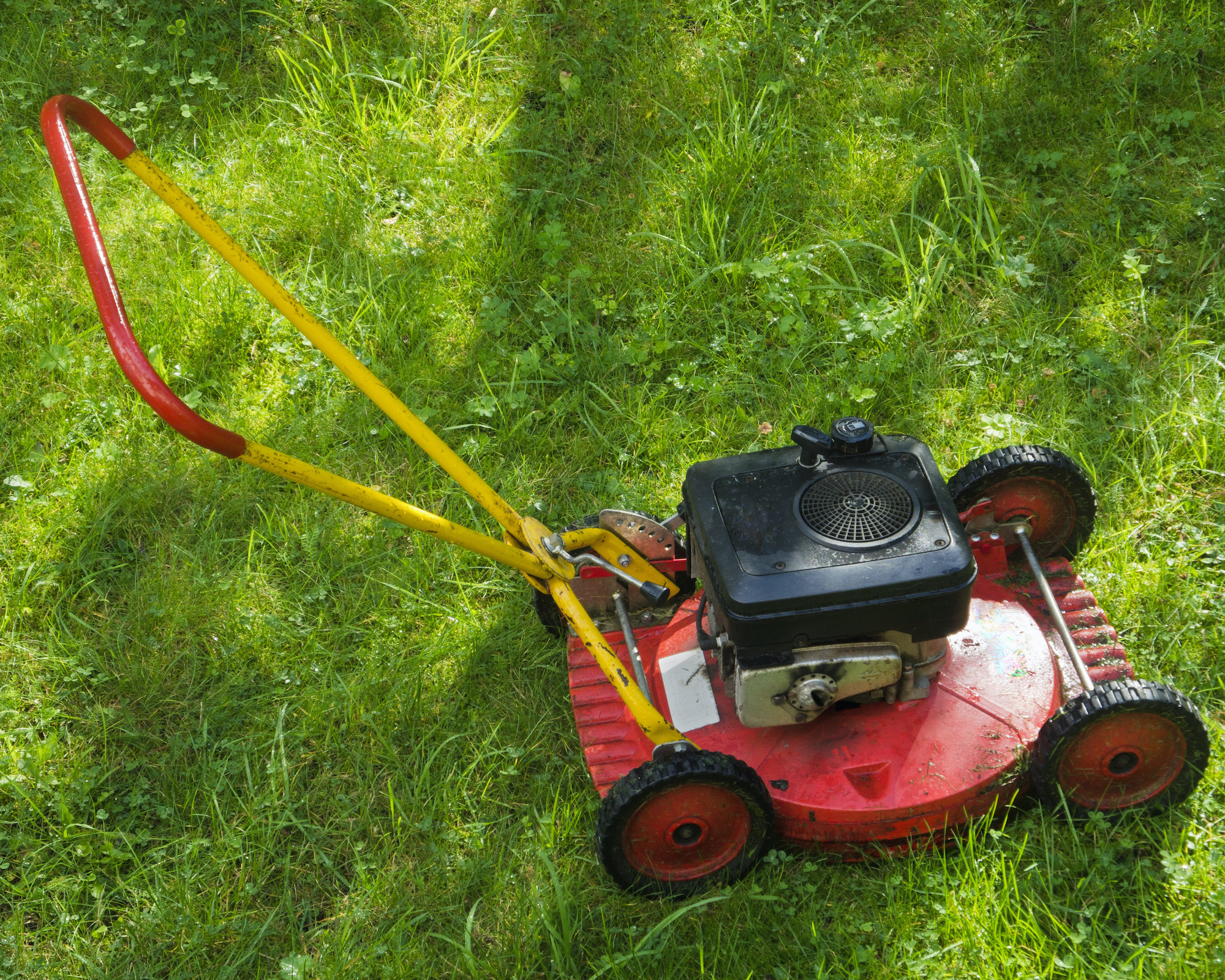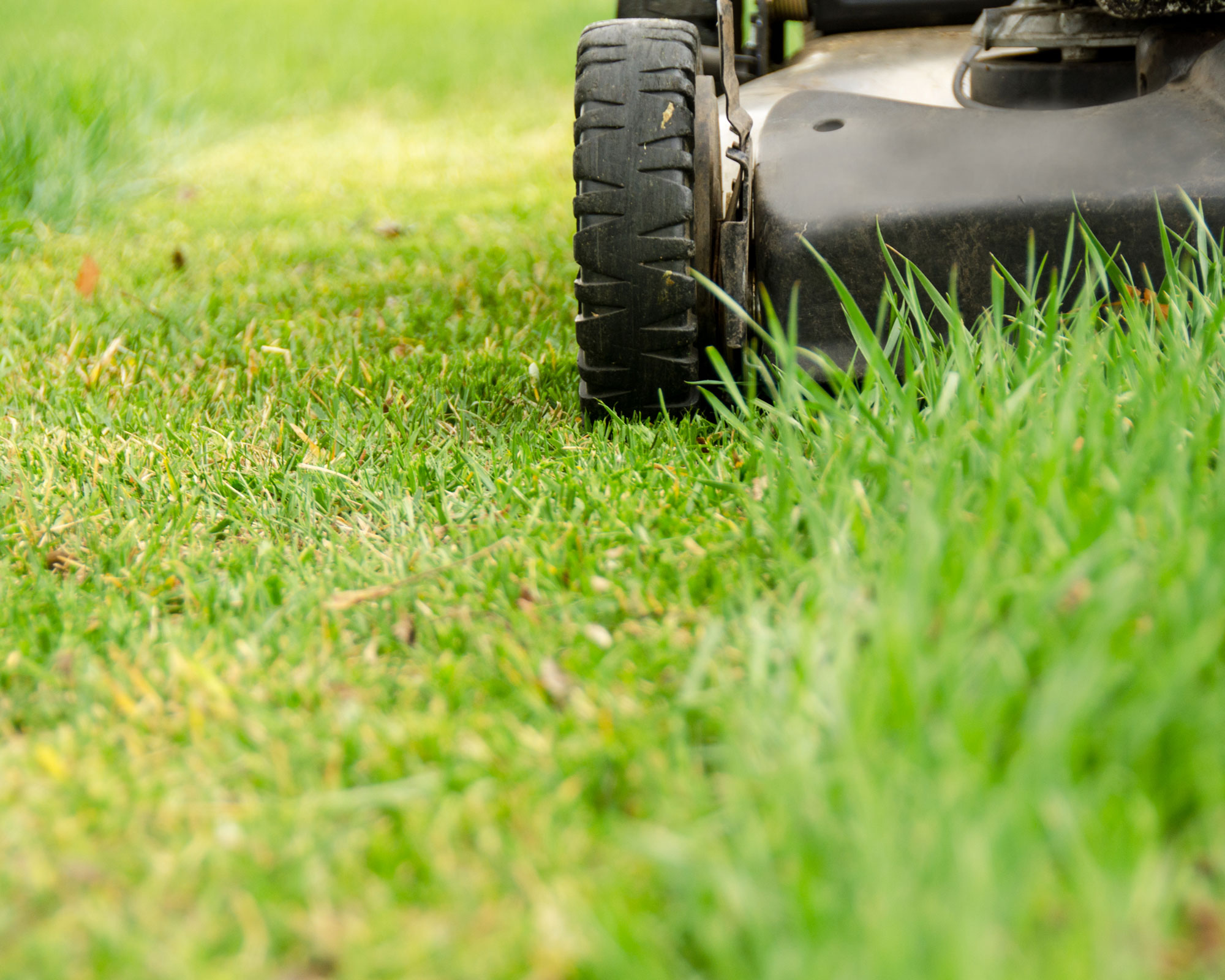How to mow a lawn, according to a landscaping expert
Enjoy a luscious, healthy plot, by learning how to mow a lawn the proper way
Danielle Valente

Curious how to mow a lawn to perfection? Your yard will be the talk of the neighbourhood with our expert-backed tips.
It can feel like a tall order to keep grass green and growing properly, so instead of rushing through the process, it's important to learn how to give it a proper chop with our lawn pro tips.
Familiarize yourself with these golden rules from the pros and keep our guide to the best lawnmowers handy.
How to mow a lawn, according to a landscaping expert
Once you learn when to start mowing a lawn in spring, the ideal time, there are a few things to keep in mind before getting down to business. A healthy lawn has benefits, so let's kickstart our spring refresh on the right note.
1. Clean up
In order to get your lawn spring-ready, there has to be a clean-up process. No surprise there.
"Start by walking the perimeter of your lawn to trim any overhanging grass with a string trimmer, such as this Worx 20-Volt Power Share GT Revolution from Target," says Lawn Love CEO, Jeremy Yamaguchi.
"Next, check the lawn for any winter waste. Clearing any twigs, pine needles, and pine cones is a smart move, as they can clog up or even damage some mowers."
Get small space home decor ideas, celeb inspiration, DIY tips and more, straight to your inbox!
2. Follow the rule of thirds

If you don't want to make any mowing mistakes, start by following the one-third rule: never cut more than a third of the blade of grass in one go, as cutting more can "stress" the grass, stunting subsequent growth.
As the weeks progress, trim the grass gradually to reach the desired length. Cutting it too short, too fast is known as scalping, which can lead to disease and weed infestation.
3. Cut based on specifics
"How short to cut your grass depends on your specific grass type," Jeremy adds. "Most cool-season grasses should be cut around 2-3.5 inches, and most warm-season grasses should be cut around 1-2.5 inches, but the specific ideal length depends on the variety."
And, in case you're curious, we also asked experts how to sharpen lawn mower blades. Chances are, you're going to need to at some point throughout the season.
4. Be patient

If your lawn is looking a bit wild and overgrown after the winter, resist the temptation to cut it all right down. Even if the overgrown grass looks lifeless, there will be tender growth underneath that may react negatively to an aggressive trim. Cut gradually over a number of weeks, slowly decreasing the cutting height on your lawnmower each time to reach your preferred grass length.
5. Learn lawn care hacks
Once you've scored one of the best electric lawnmowers and you've covered the basics, check out a few hacks to make your life easier so that you're working smarter, not harder.
Our top lawn care hacks
Use apple cider vinegar instead of weedkiller: it's just as effective and more eco-friendly.
Use garlic to deter root parasites: just spread garlic cloves over your lawn.
Wear stiletto shoes(!): the spiky heels will help puncture thick grass and let nutrients penetrate the soil.
Put rusty nails in your watering can: grass needs iron to photosynthesise, and the nails will release iron into the water.
Spray the lawn with an aspirin solution to prevent disease.
If you're regrowing patches of your lawn with brand new grass from seed, be especially careful not to damage this young grass. First-season grass from seed is especially tender, with weak blades that need time to establish.
No new grass from seed should be cut before it reaches at least three inches in height. You can still mow the rest of your lawn, but you may wish to protect the fresh areas with temporary fencing. Yep, there is a common theme here — take it easy with that mower!
6. Trim hard-to-reach spots
A good-looking lawn has well-defined borders; trimming the edge of a lawn is called contouring. This can be tricky with traditional corded lawnmowers but is much easier with cordless models, such as the Flymo Contour Cordless 20V. Choose from the best electric lawnmowers, including cordless models, in our buyer's guide.
7. Mow in warm weather
Once the summer gets going, trim your lawn often, once or twice a week, depending on the desired length. Grass can grow literally overnight, so don't underestimate its potential to grow long quickly. Besides, not mowing your lawn will result in the grass going to seed.
A lightweight, portable lawnmower is best for frequent mowing. We have the best compact, easy-to-use models in our buyer's guide to the best small garden lawnmowers.
8. Practice good mowing techniques
For best results, avoid always mowing your lawn in the same direction, as this can lead to compacted soil and ruts. Try to vary the mowing pattern and direction. Avoid mowing wet grass, as the result will be very uneven. Equally, don't mow your lawn during lunchtime heat; the best time to mow your lawn is mid-morning, when the grass is dry but not hot.
9. Pay attention to the edges
Sharp edges are crucial to neat and appealing lawn, but they can't achieved with a lawnmower alone. How to achieve perfect edges will depend on the general state of your lawn.
If the edges are generally uneven, you may need to re-cut them with a half-moon edging iron or, if you don't have one, a sharp spade. Use a plank of wood or bricks to make sure you cut evenly.
If you desire a curved effect, use a garden hose as your template. We advise re-cutting your lawn every year. By the way, our 15 garden edging ideas are sure to give you some inspo.
10. Invest in the proper tools
"Of course, none of this is very useful without an efficient mower," Jeremy adds. "When it comes to lawnmowers, RYOBI is a brand I like. I recently tried the RYOBI 40V Brushless 20" Push Lawnmower, available from Amazon, and it performs incredibly. It's one of the easiest lawnmowers to use and it's powered by lithium-ion batteries, so it lasts for a long time before needing to be recharged."
How to know if you're over-mowing your lawn
Over-mowing is a very common problem that leads to patchy, unhealthy lawns or the dreaded lawn burn — a lawn that's turned brown seemingly for no reason.
While summer lawn care is important, if you mow too often, you're actually preventing the grass from photosynthethising, which is what makes it green, hence the brown, burnt lawn.
Our advice is: slow it down a little; that's what the different heights on your lawn mower blade are for. If you're mowing twice a week, and the weather's hot and dry, go down to once a week or even every other week.
Proper mowing techniques go hand in hand with other essential lawn jobs including aerating your lawn twice a year. Not quite feeling the upkeep process? Never fear: we've uncovered 12 grass alternatives for lawns that are low-maintenance and don't require any mowing. Phew!
Anna is a professional writer with many years of experience. She has a passion for contemporary home decor and gardening. She covers a range of topics, from practical advice to interior and garden design.
- Danielle ValenteContent Editor
